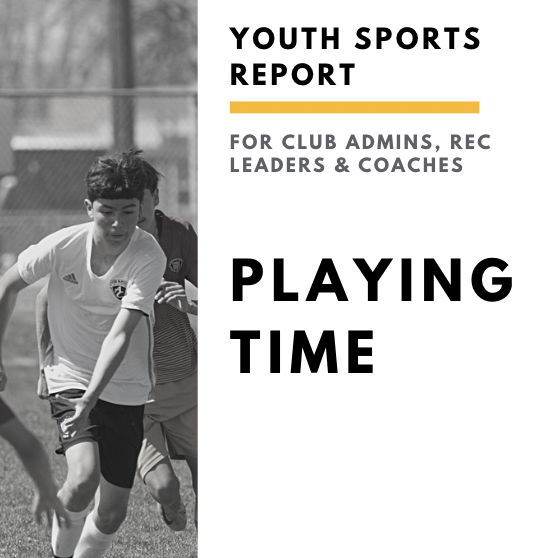Get our exclusive report. Download the iSport360 Club Switching Report Here – For Club Admins, Rec Leaders and Coaches.
How to Lead a Positive Coaching Culture in Youth Sports
One of the biggest opportunities to make a lasting change to our youth sports culture, lies in the hands of the coaches and ADs. Your program’s and team’s culture is the expression of your shared values, attitudes, and goals. It determines whether your team members focus on:
The culture you create is so impactful. Primarily because it directly influences many areas that directly affect the team’s functioning and performance. It’s important for coaches to lead with a positive mindset. As everyday headlines prove (unfortunately) too many teams are permeated with negativity, driven by unhealthy attitudes toward competition and overrun with internal conflict.
Your goal as coach is to create a team culture that nurtures individual and team growth, development, success, and fun. To counter those negative experiences we all read about too often, coaches and ADs can use these four tips to create a positive culture that is healthier and more fun for the youth athletes.
1. Lead by Example
How your athletes treat their teammates and others is greatly influenced by how you treat them and the culture you create in your program.
We’ve said it before, and we’ll say it again: you coach a sport, but you also teach kids, and great coaches are almost always great teachers. Never lose sight of the fact that the role of a coach extends beyond preparing athletes for game day. Long after their competitive careers have ended, the values they learn under your watch will influence their behavior and choices for a lifetime. By focusing on the development of the whole person, not just the athlete before you today, you’ll create opportunities for positive psycho-social development and help set up each child to reach their full potential.
Here’s a quick recap of some of our favorite teacher tactics. You’re likely doing some of these things already,
- Be positive in teachable moments, showing how even when athletes “fail” at something, that’s an opportunity to learn and grow. By providing a healthy perspective on success and failure, you’re sending them healthy messages. This will help nurture their personal development.
- Be a good role model in terms of sportsmanship, attitude and emotions. How you behave at practice and at competitions can and will influence how your athletes feel and perform. An example is behaving with respect toward officials, even when you vehemently disagree with their calls.
- The path to improvement can sometimes be difficult. Provide positive feedback. Show your athletes, by using the Smart Goal Model, how they can assess their strengths and weaknesses as well as track their performance and improvement.
Motivating your team so that everyone looks forward to practices and games will go a long way toward building a positive culture.
2. Consistency is Key
Establish the behaviors, activities and rules that will become routine in your team’s daily life. Make sure each team member – and parent – knows what is expected of them. Team members and their parents (and sometimes even the coaches) may need reminders about what is expected, and acceptable. Don’t hesitate to remind about your expectations or enforce consequences. Establish these routine activities and habits as second-nature and soon you will have a system which reinforces itself.
3. View Parents as Partners
We’ve already covered how building a healthy parent-coach relationship is important to every kind of success for your team. With mutual respect, open communication, and a proactive approach, the coach/parent relationship can be beneficial everyone.
And don’t forget that the majority of parents are well-intentioned. They are just trying to do what they think is best for their kids. But you don’t have to accept parent behavior that you believe is hurting their kids or the team; remind them of the conduct you expect from them and the kids. At the beginning of the season, share the Collaborating With Parents video with team parents. This will help them understand the appropriate and necessary roles they can each play to create a positive and respectful relationship.
4. Focus on Fun
Kids play sports to learn skills and be part of a team that sticks together and helps each other grow. But what they are most interested in is having fun. Today, 7 out of 10 kids quit sports because it’s not fun anymore, and there are few things that kill the joy of sports for kids faster than coaches who are too intense or serious. If you’re having fun and laughing, so will the kids on your team.
Building and maintaining a positive environment requires vigilance. But if you are proactive about using these techniques for creating a positive team culture, you’ll be a part of the solution instead of part of the problem.
Written By Garland Allen
Garland Allen is an educator who served as Athletic Director, coach of Basketball, Football and Track & Field, for more than 35 years in public education. Garland spent more than 20 years as a Director of Athletics in Greenwich, CT and Ridgewood, NJ. He also spent eight years as the Director of Wellness for the Ridgewood Public School District. He currently serves on the Advisory Board for the NYU School of Professional Studies Sports and Society program, where he is actively engaged in research and programming on issues related to youth sports.
Learn more. inCourage delivers research-based solutions for improving the culture of youth sports. Our engaging videos and informative educational resources are available for free to anyone who wants to create better communications and outcomes to keep kids happy, healthy and in the game. Original article can be found here.
Learn more or request a demo of our youth sports software that is helping teams improve communication, organization and player development.
August 29, 2021






